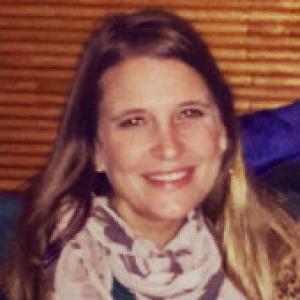Conclusion of the Blog Mini-Series for Financial Inclusion: A Case for Orphans and Vulnerable Children
The time has come to wrap up the blog mini-series. The IRC and the ASPIRES project thank all those bloggers, readers, cross-posting sites, and tweeters for the great content and for the dissemination support and readership. Our aim has been to highlight practitioners and researchers innovating in community-based savings-led microfinance for orphans and vulnerable children; we want to ensure that they have the tools, resources, and skills needed to break cycles of poverty, reduce infection rates, and ultimately transition into healthy and economically well adults and caregivers.
Before we close, I would like to highlight selected posts from the blog mini-series. These posts contain what I found most interesting and thought-provoking in the series as well as some valuable lessons learned. I encourage others to post comments on their highlights as well:
- While all children in poverty are vulnerable, there is a particularly increased level of vulnerability associated with children affected by HIV/AIDS. The loss of a mom in the early stages of a child’s life has huge long-term consequences for the development of that child; the biggest driver of maternal loss is undiagnosed HIV. See “A Case for Engaging Orphans and Vulnerable Children in Economic Strengthening.”
- Recent shifts made to best practice programming for orphans and vulnerable children move away from supporting the children in isolation and focus on strengthening family units with specific emphases on poverty and economic support. Savings groups (SGs) have emerged as a particularly flexible, culturally-appropriate, and multi-pronged approach that supports better financial decision making, provides entry points for other related interventions, and allows for networking and social capital building. See “Investing in Economic Strengthening: Self-Help Savings Groups for Caregivers” and “Savings Groups and Skills Development: A Pathway for Youth Economic Strengthening.”
- We need to recognize that orphans and vulnerable children take on many roles in the family and have economic lives at young ages. We can engage them early on to support child protection and reduce vulnerability. Economic strengthening efforts for children, which should be savings led (delaying the introduction of credits/loans), can start as early as age 6. See “Financial Inclusion, Yes, but Don’t Forget Protection.”
- The promising impacts of school-based savings programs show that access to a simple savings account combined with a gentle nudge toward saving can be effective in improving the financial capability and welfare of poor families. See “How Can Children and Youth Become Financially Capable Adults?”
- Initial research comparing youth SGs with group savings accounts has found SGs to be better at increasing savings amounts and reaching young females. They have also helped to mitigate shocks and to support quick recovery from them and increase self-esteem. See “A Bridge to Adulthood: The Promise of Savings Groups for Vulnerable Children.”
- While SGs provide foundational support for orphans and vulnerable children, they also provide entry points for further economic strengthening activities, such as skills training, market linkages, and financial literacy training, that support savings growth and investments. See “Looking Ahead: The Future of Economic Strengthening.”
Please be on the lookout for more to come from the ASPIRES project around community-led microfinance for orphans and vulnerable children. In the coming months, the IRC, in partnership with FHI 360, will be publishing a literature review, technical briefs, and technical guidance that focus on capturing research, best practices, and program design support for those interested in directly engaging orphans and vulnerable children. We look forward to a continued dialogue, learning, and doing more to support the healthy and safe economic lives of orphans and vulnerable children. Stay tuned on Microlinks for the latest updates.
This blog series is courtesy of Microlinks, part of the Feed the Future Knowledge-Driven Agricultural Development project. Its contents were produced under United States Agency for International Development (USAID) Cooperative Agreement No. AID-OAA-LA-13-00001. The contents are the responsibility of FHI 360 and its partner, the International Rescue Committee, and do not necessarily reflect the views of USAID or the United States Government.


